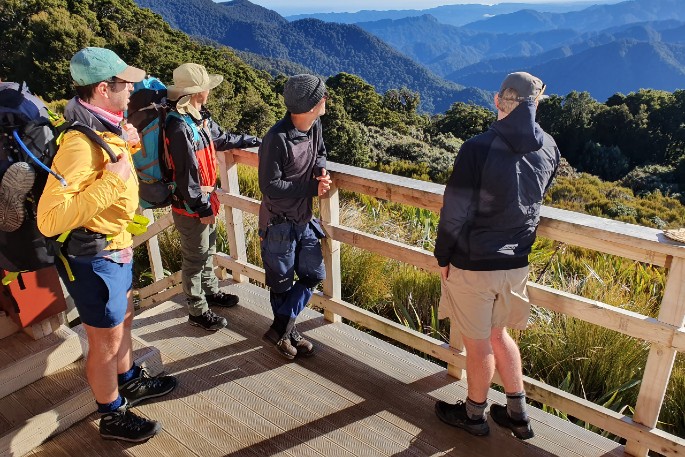This Content Is Only For Subscribers
Visitor demand is growing and New Zealanders continue to value getting out in nature, according to the Department of Conservation’s latest annual visitor insights report released today.
Visitor activity and feedback between July 1, 2023, to June 30, 2024, shows more local and international visitors are using DOC’s bookable accommodation compared to last year.
DOC’s heritage and visitors director Catherine Wilson says around one and a quarter million bednights were booked for DOC accommodation in the 2023/2024 season.
“This contributed roughly $18.25 million towards the costs of providing these facilities. As DOC also provides many non-bookable huts and campsites, the total number of bednights for DOC accommodation will be far greater.”
A bednight is defined as one person occupying one bunk or campsite for one night.
Bookings for non-Great Walks sites increased 28 per cent on the previous season, to 1,007,069 bednights, while Great Walks were up 10 per cent to 249,277.
The growth in use is down to several factors including facilities being reopened after weather-related closures, and more huts and campsites becoming bookable.
New Zealanders, understandably, continue to choose easily accessible options for getting outdoors, says Catherine.
“Most of the top 10 places visited by New Zealanders are in the North Island, near coastal areas and population centres.
“Protected natural areas near Auckland such as Long Bay-Okura Marine Reserve and Rangitoto Island were most popular, while iconic heritage sites near Auckland are also well visited.
“Short walks of less than three hours duration remain the most popular activity for both New Zealanders and international visitors.”
“International tourism continues to recover from the impact of the pandemic,” says Catherine Wilson.
“In June 2024 international visitor arrivals were up to 87 per cent of pre-pandemic levels.”
“An estimated 72 per cent of these undertook a walk or tramp while here, highlighting the importance of nature to our visitors.”
Fiordland and Aoraki Mount Cook national parks in the South Island had the highest levels of international visitor activity. In the North Island, Tongariro National Park attracted the most international visitors.
Compared with the previous year, international visitor bed night bookings on the Great Walks increased by around 27 per cent, bookings by New Zealanders increased by 2 per cent.
Catherine Wilson says as both domestic and international visitor numbers increase, so too does pressure at popular places, making it all the more important for people to visit responsibly.
“It’s disappointing to see around a third of New Zealanders noticed visitor impacts at the natural areas they visited, with damage to natural landscapes observed the most.
“This summer, we all need to do our bit to protect the natural and cultural heritage we enjoy outdoors.”
DOC’s visitor insights reports are produced biannually covering the peak summer period and full year (July to June). They are designed to inform DOC’s work and support evidence-based visitor management decisions at regional and national levels.
These reports also provide New Zealanders with an understanding of visitor activity in conservation areas across Aotearoa.



